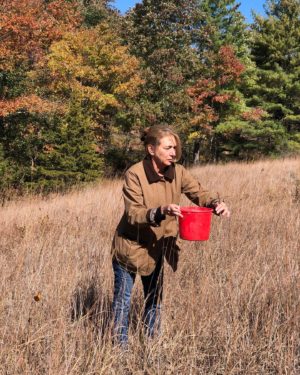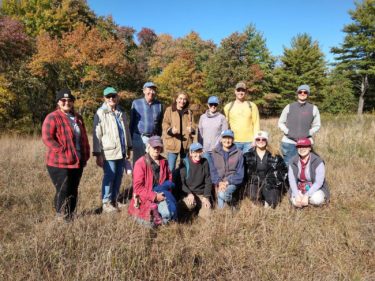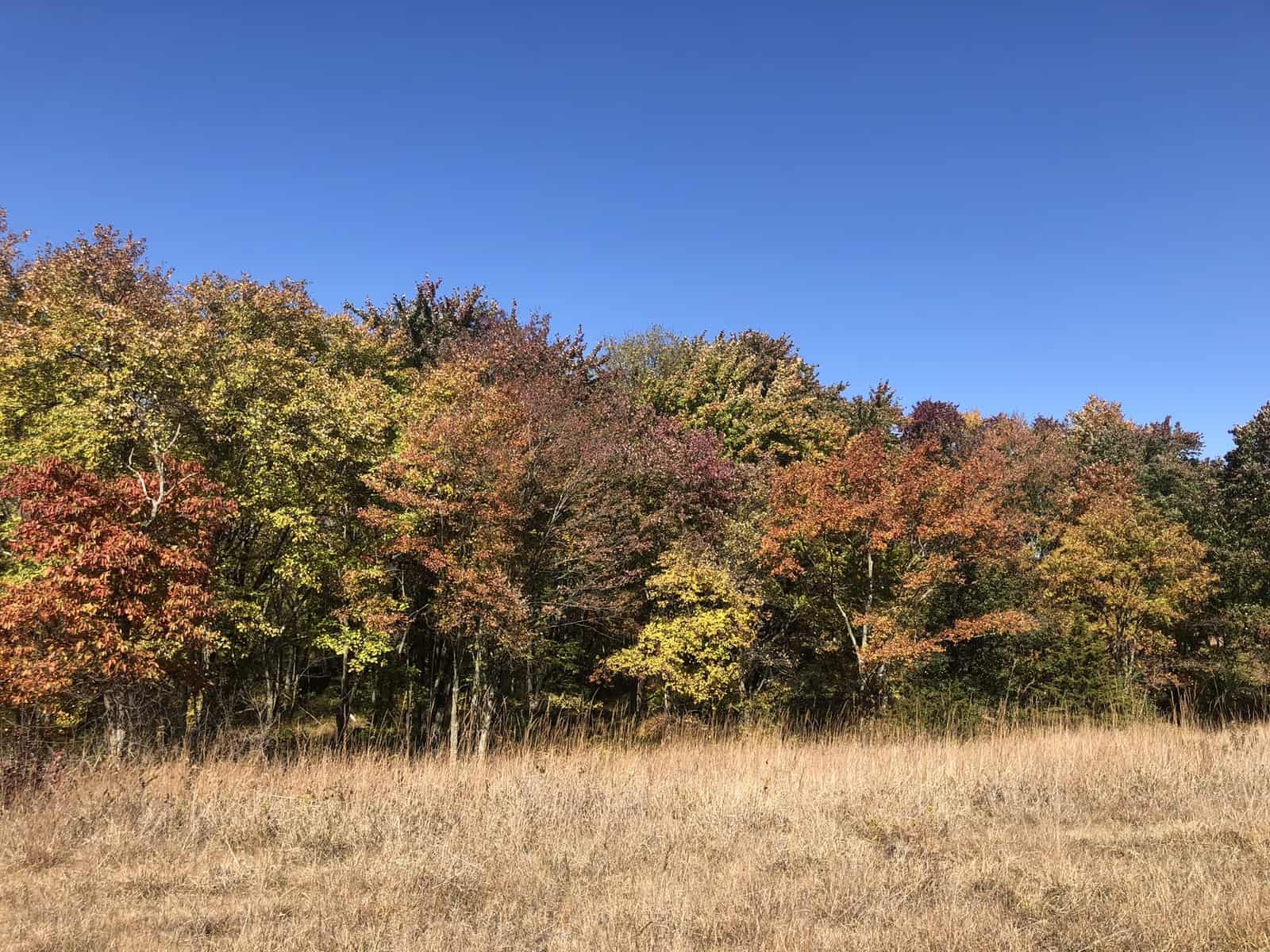gathering seeds at Willisbrook: a rare serpentine barrens ecosystem sprouts new
By Tianna Godsey
This October, volunteers and a few members of Natural Lands staff gathered on a beautiful autumn afternoon to collect seeds from the serpentine barrens ecosystem, which is cared for and protected at Willisbrook Preserve.

Photo: Tianna Godsey. Alt text: A woman in a long brown coat and jeans holding a red bucket in a field of tall grasses, collecting seeds from Indian grass.
Erin Smith, preserve manager, shared how the seeds found in this ecosystem, known as the Sugartown Serpentine Barrens, were proven to be unique in structure from this rare habitat, which supports many threatened and endangered flora and fauna species. The barrens were designated as a Wild Plant Sanctuary by the PA Department of Conservation and Natural Resources in 2010.
Seed collecting, while not rocket science, is not for the impatient. It is an activity that evokes a wholesome, meditative feeling, as you gently move between tall native grasses and collect the seeds that have sprouted from select plants. On this volunteer day, Claudia Winters, assistant preserve manager, pointed out the plants to collect from, including little bluestem, Indian grass, goldenrod, and serpentine aster. All these seeds will be used in a larger restoration project on Willisbrook Preserve.
After collecting each seed, they must then be dried in a process that will mimic natural seed propagation. Erin and Claudia set up industrial fans and tarps to spread the seeds on top of, allowing them to dry for two to three weeks. The seeds will go back in the ground after they are fully dried and begin growing again—used in this instance to steady the banks of the stream during a culvert removal project.

Photo: Debbie Beer. A smiling group of three Natural Lands staff and nine volunteers at a seed collection day, the field is brown grasses and behind them a long row of trees with a variety of fall colors – red, orange, yellow, green.
“The seed bank exists, we just provide the ideal conditions for them to germinate,” said Erin as she showed the volunteer group an area of Willisbrook where the seeds will be planted.
A few years ago, Natural Lands partnered with Tyler Arboretum for a seed collection and share, planting some of the seeds on the Pink Hill at Tyler. (Read more: ‘Saving a Rare Local Ecosystem’)
Seed collection itself is a practice that has been traditionally used on farms and in backyard gardens for more than 12,000 years and is practiced today at many of Natural Lands’ preserves and properties, including our public garden, Stoneleigh: a natural garden.
Seed collection and replanting helps preserve or re-introduce rare species of local genotypes. Willisbrook was one of the first preserves taken under the care of Natural Lands, gifted in 1963 by Jane Gordon Coxe Fletcher.
Today, its 126 acres are permanently protected.
Stay tuned for more project updates and happenings at Willisbrook and beyond. Learn how to get involved, or join us to volunteer: natlands.org/events.

Photo: Tianna Godsey. Alt text: Fall foliage on the trees at Willisbrook; a brown grassland field and bright leaves in red, orange, yellow, magenta and green.
